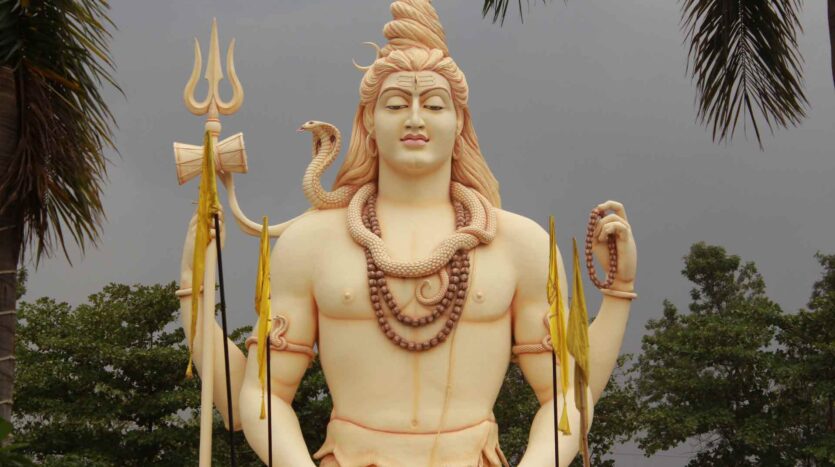How to Celebrate Mahashivratri
Introduction to Mahashivratri and its Significance
Mahashivratri is a Hindu festival celebrated in honor of Lord Shiva, one of the three primary deities in Hinduism. It is celebrated on the 13th night/14th day of the Hindu month of Phalguna. It is believed that Lord Shiva was married to Goddess Parvati on this day.
The festival is celebrated with great fervor in almost all parts of India. People observe fast and abstain from eating grains and dairy products. Devotees offer special prayers and chant mantras to seek the blessings of Lord Shiva. The significance of Mahashivratri lies in its celebration of the union of Shiva and Shakti.
It is believed that on this day, the feminine aspect of Shiva, Shakti, was united with the masculine aspect of Shiva, creating the balance of energy in the universe. Mahashivratri is also seen as an auspicious day for spiritual practices and meditation. This is because it is believed that on this day, Lord Shiva performed the ‘Tandava’, his cosmic dance, which symbolizes the cycle of creation, preservation and destruction.
The celebration of Mahashivratri has deep spiritual significance and is an important festival in Hinduism. It is believed that observing the fast and participating in the rituals associated with the festival helps to purify the soul and bring one closer to the divine energy.
Traditional Rituals Associated With Mahashivratri
Mahashivratri is an important Hindu festival celebrated annually to honor the Supreme Lord Shiva. On this day, devout Hindus perform various rituals to please Lord Shiva and seek his blessings. Here are some of the traditional rituals associated with Mahashivratri.
- Fasting: Fasting is one of the most important rituals performed on Mahashivratri. Devotees observe fast and abstain from food and water throughout the day.
- Visiting the Temple: It is customary for devotees to visit the temple of Lord Shiva on Mahashivratri and offer prayers to seek his blessings.
- Bathing the Shiva Linga: On Mahashivratri, devotees typically bathe the Shiva Linga with water, milk, honey and other ritual items.
- Offering Bel Leaves: Bel leaves are offered to Lord Shiva as part of the ritual. The leaves are said to have special significance and are believed to be auspicious.
- Chanting of Mantras: Devotees chant mantras dedicated to Lord Shiva throughout the day.
- Lighting Diyas: Lighting diyas is another important ritual associated with Mahashivratri. Devotees light diyas and offer prayers to Lord Shiva.
These are some of the traditional rituals associated with Mahashivratri. Performing these rituals is believed to bring peace, prosperity and good luck to the devotees.
Considerations for Celebrating Mahashivratri in Different Regions
Mahashivratri is celebrated in many regions across India, each region having its own unique customs and traditions. Depending on the region, the celebration of Mahashivratri can differ in many ways. Here are some considerations to keep in mind when celebrating Mahashivratri in different regions:
- In Northern India, Mahashivratri is celebrated with much fanfare and grand processions. People gather in large numbers to perform rituals and offer prayers to Lord Shiva.
- In the Western part of India, Mahashivratri is celebrated with the lighting of lamps and the offering of flowers and fruits to Lord Shiva. People also fast and observe a strict diet.
- In the Southern part of India, Mahashivratri is celebrated by performing poojas and yagnas to Lord Shiva. People also observe a fast and offer prayers to Lord Shiva.
- In Eastern India, Mahashivratri is celebrated by performing special rituals and aartis. People also offer special prayers to Lord Shiva and exchange gifts.
No matter the region, Mahashivratri is a special and sacred day. By following the customs and traditions of the region, everyone can enjoy this special day without any difficulties.
Tips for creating an enjoyable and meaningful Mahashivratri celebration
Mahashivratri is a special religious festival celebrated in reverence of Lord Shiva. It is an important day for many Hindus and it should be celebrated in an appropriate manner. Here are some tips to help you create an enjoyable and meaningful Mahashivratri celebration:
- Gather your family and friends together to celebrate the festival. Make sure to include as many people as possible in the festivities.
- Decorate your house with flowers, lights and other decorations to create a festive atmosphere.
- Prepare traditional Mahashivratri food such as puran poli, kheer, and other sweets. Offer the food to Lord Shiva as prasad.
- Organize a puja and chant mantras in praise of Lord Shiva. Make sure to do the puja with devotion and dedication.
- On the day of Mahashivratri, wear white clothes to signify purity and peace. You can also wear traditional dress such as a dhoti or sari.
- Visit a Shiva temple to offer your prayers and seek blessings from the Lord.
- Distribute prasad to your family and friends. This will ensure that everyone is blessed with good health and prosperity.
- Donate food, clothes and other items to the needy. This will help create a sense of unity and compassion.
- Organize a cultural program to entertain your family and friends. This can include singing, dancing, dramas, and other activities.
By following these tips, you can create an enjoyable and meaningful Mahashivratri celebration. May Lord Shiva bless you and your family with peace and prosperity.
Conclusion
Mahashivratri is a wonderful opportunity to celebrate Lord Shiva and all the blessings he bestows on us. There are many ways to mark the occasion, from chanting mantras to fasting and celebrating with friends and family. By taking part in these traditional activities, you’ll be honoring Lord Shiva and the many benefits that come with it. So, get ready to celebrate Mahashivratri and experience the joy and peace that comes with it.


